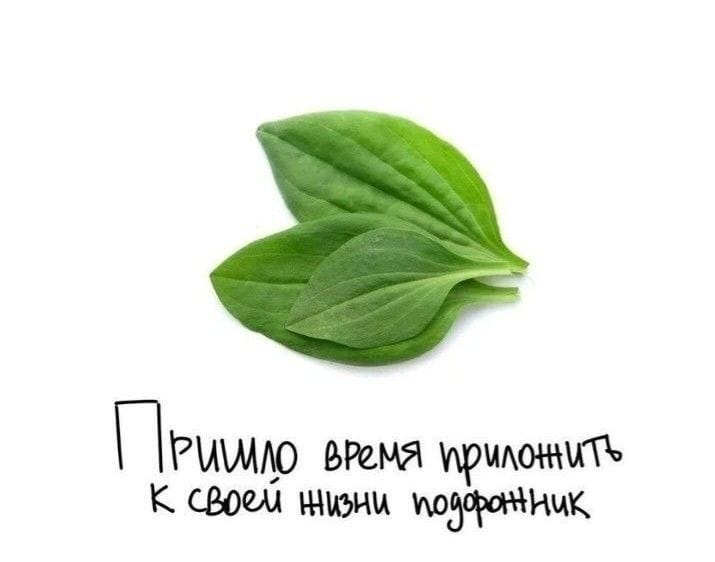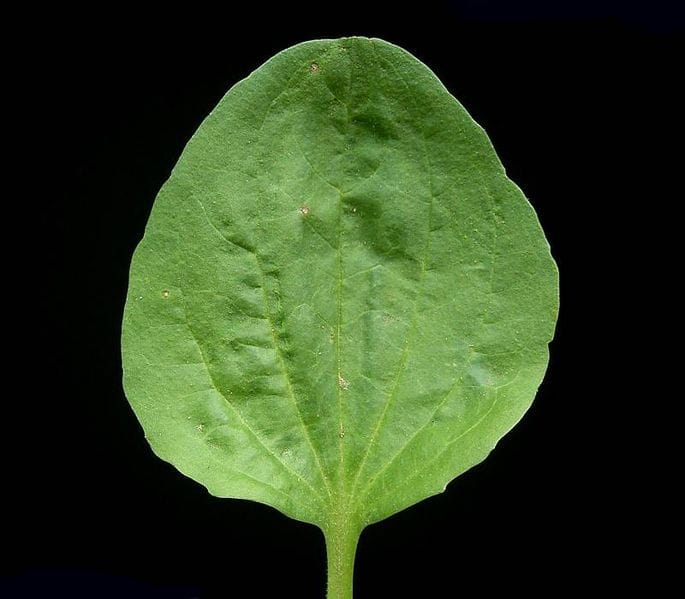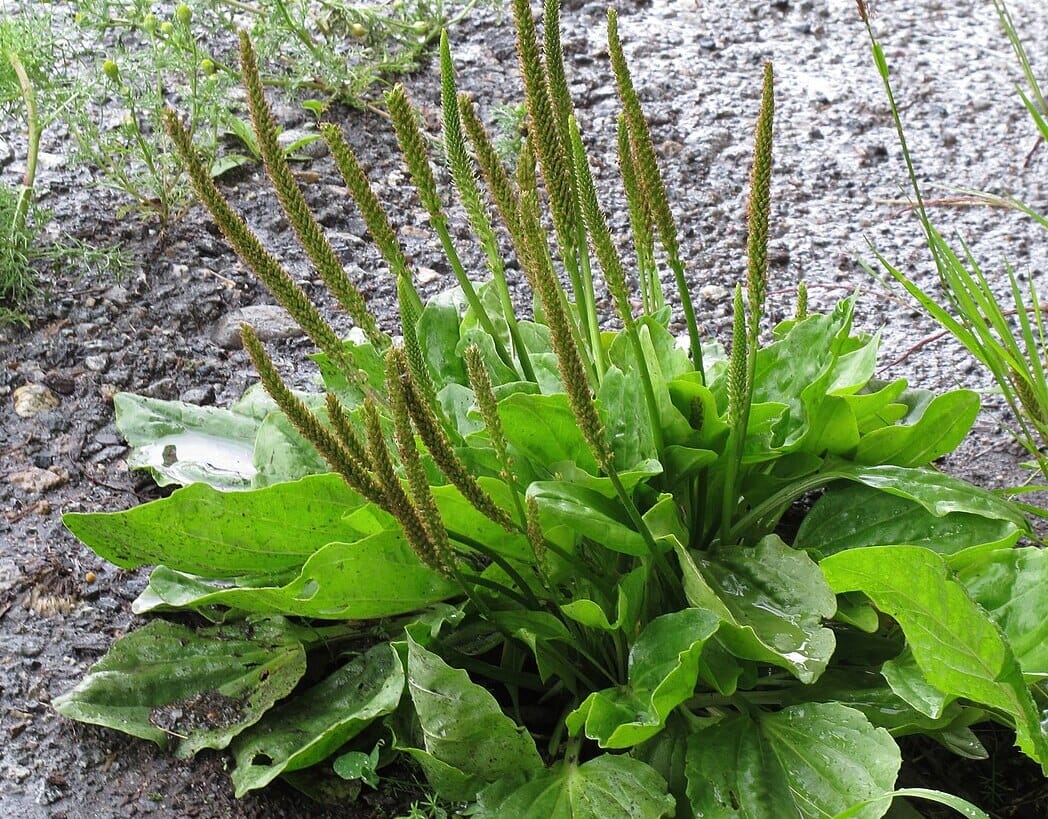In childhood, when many people got injured, they applied a plantain leaf to the abrasion to stop the bleeding and speed up healing. We decided to check how effective this folk first aid remedy is.
They write about the effectiveness of plantain as a hemostatic and healing agent Media And portals about a healthy lifestyle. Users blogs share personal experience uses of this plant and the expected positive effects. Parents ask forums advice on which side to apply a plantain leaf if a child falls and breaks his knee. Visitors also discuss this topic services questions and answers. The supposedly miraculous plant became internet meme and gave rise to many jokes that applying its leaves can help solve any problems - from an abrasion on the knee to broken roads and falls ruble exchange rate.

Plantain - a genus of plants that has more than 250 species. In Europe and Asia wide widespread big plantain. It is wind pollinated and, due to its unpretentiousness, grows everywhere like a weed. This plant has been used in traditional medicine of different peoples for centuries. applied to relieve pain, reduce fever, for problems with the digestive system, infectious and skin diseases, as well as for abrasions and wounds. In plantain contained a number of useful substances that theoretically can have a disinfecting, hemostatic and anti-inflammatory effect: salicylic, oleanolic And ursolic acids, flavonoids, polysaccharides etc. B pharmacies and now you can find plantain tincture, which is recommended to be taken internally for coughs and externally for the treatment of minor abrasions and wounds. So applying plantain to broken knees is by no means the know-how of Soviet and post-Soviet children.
There are not many studies to test the effectiveness of plantain for treating wounds. In 2012, scientists from Brazil conducted experiment: 56 laboratory mice were wounded in the neck area and then divided into four groups, which were treated with different remedies (plantain extract, siparuna extract, wound healing ointment and water). The rate of wound healing was recorded on the 4th, 9th, 15th and 21st days of the experiment. On the 15th day, the wounds of the mice treated with plantain extract began to heal completely. The scientists concluded that of all the treatments studied, plantain extract was the most promising for wound healing. In 2018, a group of Turkish scientists similarly researched the effectiveness of using ointments with plantain extract on laboratory mice. 72 pre-wounded animals were divided into four groups: the first was treated with 10% ointment, the second with 20% ointment, the third with Vaseline, and the fourth did not receive any treatment. The results were measured once a week, and by the end of the experiment (after 21 days), it turned out that in animals whose wounds were applied with plantain extract, the wounds healed faster and better.
Similar studies were carried out on people, although, of course, they were not deliberately wounded. For example, in 2022 the results of such experiment published by Iranian scientists. 94 patients with diabetic foot ulcers and pressure ulcers were divided into two approximately equal groups. For two weeks, people from one group were treated according to standard medical protocols, and representatives of the second group, in addition to basic care, were treated with a 10 percent gel with plantain extract. After 14 days, the wound size of the group treated with psyllium gel was found to be significantly reduced compared to the control group. The proportion of patients whose ulcers were completely cured was also higher among them.

Two groups of Iranian scientists in 2019 independently of each other held a few more experiments both in laboratory animals and in humans. With the caveat that the topic requires further study, the researchers came to preliminary conclusions: gels with plantain and aloe extracts are relatively effective for treating wounds. Scientists do not specify the relationship between the roles of each extract in this process.
However, in 2021, Brazilian scientists conducted review Research that existed at that time on the effectiveness of plantain for wound healing, but did not find conclusive evidence. According to scientists, the design of many experiments was methodologically imperfect, and the small sample does not allow their results to be considered reliable.
In any case, the results of studies conducted in laboratories and hospitals cannot be extrapolated to field conditions where a person falls, scrapes his knee, and then applies a nearby plantain leaf to the wound. Firstly, the concentration of the active substance and its bioavailability (that is, the rate of entry into the bloodstream) in any extract is much higher than on the surface of the plant - this is precisely the point of making an extract. Secondly, there may be animal excrement and settled road dust on the surface of the leaf, so with this method of treatment you can get infected and only worsen the situation. In this case, the blood can indeed be stopped by applying plantain, but not due to the miraculous properties of the plant, but due to physical squeezing of the wound. The same effect, without the risk of infection, can be achieved by using a clean cloth or paper napkin, after first rinsing the damaged area with water or an antiseptic.
Thus, to date, not enough studies have been conducted, the results of which indicate a positive effect of drugs with plantain extract on the wound healing process, and those that exist cause methodological criticism from colleagues. Regardless of the effectiveness of such remedies, applying dirty leaves to an open wound is a bad idea, the implementation of which can lead to even greater problems.
Cover photo: Robert Flogaus-Faust, CC BY 4.0, via Wikimedia Commons
Read on the topic:
- Healthline. What Is Plantain Weed, and How Do You Use It?
- Is it true that fireweed is healthier than Coca-Cola?
- Is it true that blueberries improve vision?
If you find a spelling or grammatical error, please let us know by highlighting the error text and clicking Ctrl+Enter.






